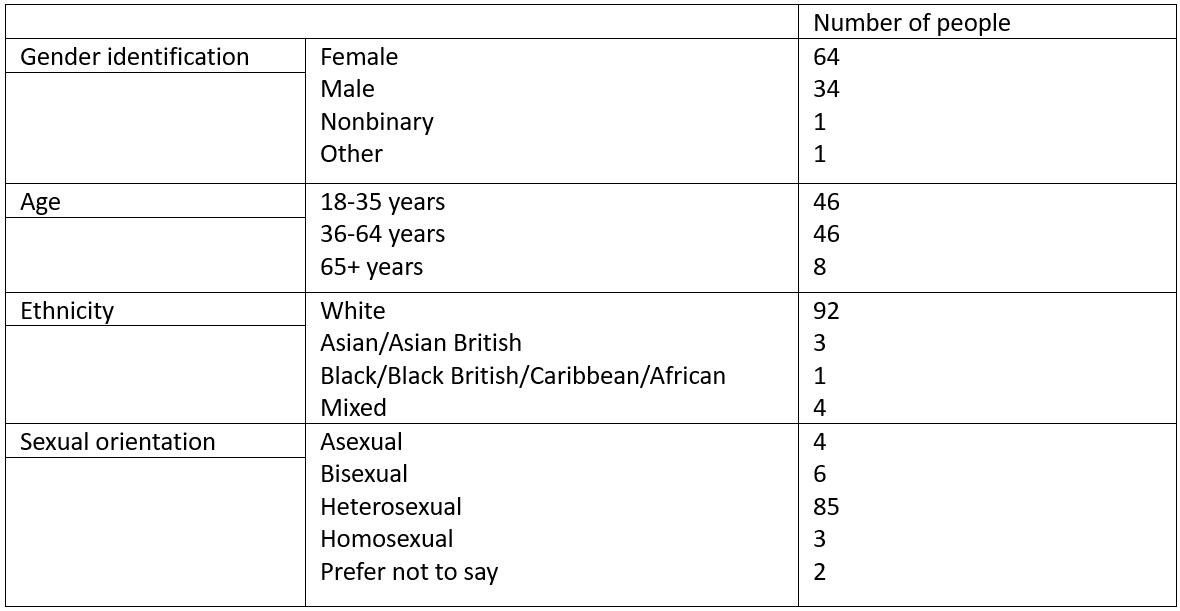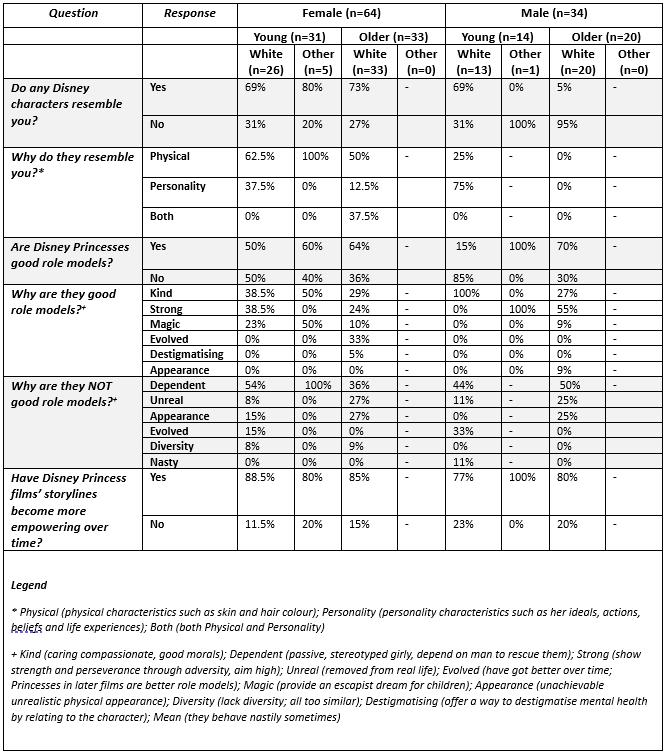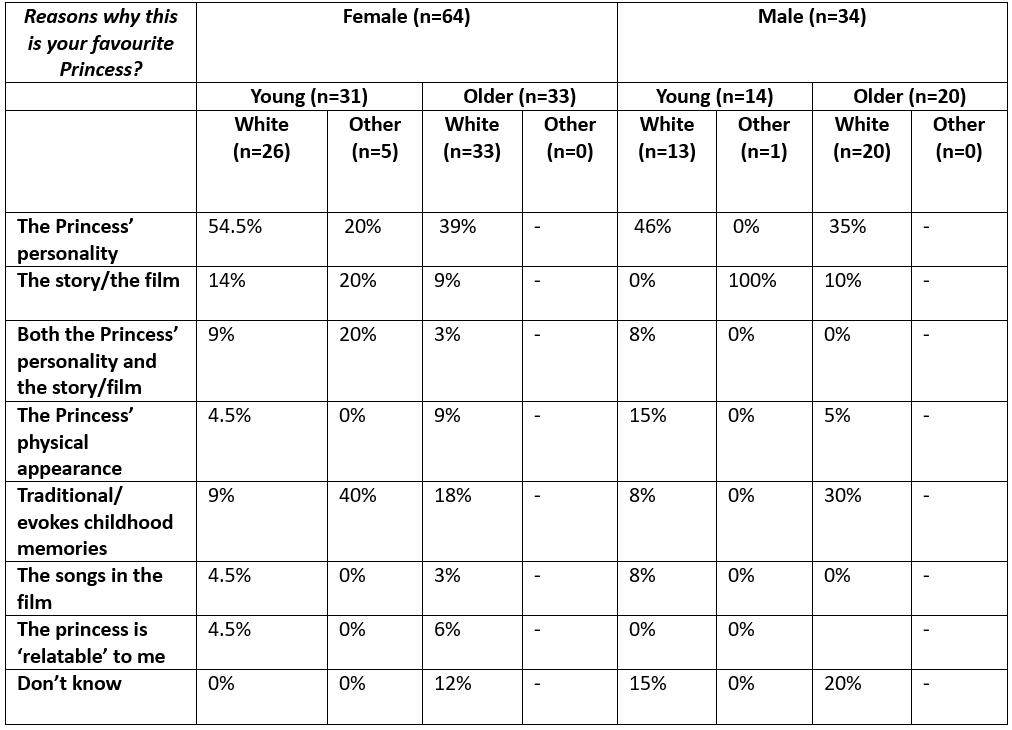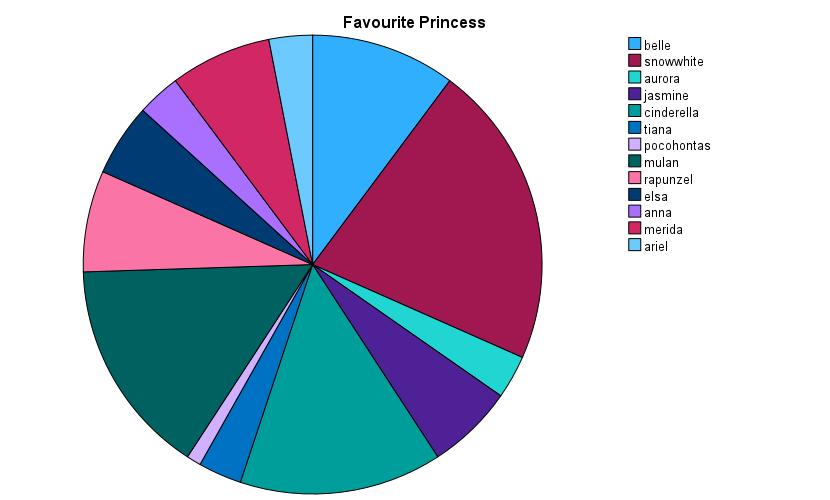
1 minute read
MY ONLINE SURVEY
(Dates on air from the 29th of March till the 6th of April)
An online survey was conducted to explore participants’ views about the Disney Princesses and the live-action films addressed in the case study. A full copy of the survey questions is available in the appendix. One hundred responses were received. Details of the full sample are given in Table one.
Advertisement
Whilst the majority of the sample could name a Disney character who was Black, Asian or minority ethnic (88%), only 44% could name a Disney character with a disability and 43% any with a mental health condition. Due to the small number of participants in some demographic categories, for analysis, groups were collapsed to allow comparison of males and females who were young (18-35) or older (36+) and White or Other (Asian/ Black/mixed). Results (percentages of all responses) concerning their views about Disney characters and Princesses (and the number (n) of participants in each cell) are shown in Table Two. Explanations for how the open-ended free-text responses were coded are given in the table legends below.
Females and younger males could identify with Disney characters; for females this was primarily due to the physical similarities they perceived, whereas for males this was more due to personality similarities. Older males and females particularly saw the Princesses as good role models, but young males disagreed; seeing the Princesses as too dependent and gender stereotyped. Reasons why they were seen as good role models included their kindness and strength, as well as their ‘magical quality’, providing an escapist dream for children. Interestingly, men were more likely than women to see the Princesses as ‘strong’. Older women noted the positive change over time, and that Princesses had become increasingly diverse and better role-models. Participants of all genders, ages and ethnicities considered the storylines to have become more empowering in later films, compared with the earlier ones.

The sample’s favourite Disney Princess is represented in Figure 27. Reasons why this Princess was selected as the favourite are shown in Table Three. For white women (and men), of all ages, personality was a salient factor in their choice but for people of other ethnicities, a liking for the story/ film itself was also a significant factor. Across age groups and genders, another important reason was that they considered their choice a ‘classic’, traditional Disney character, with which there were particular childhood memories associated.












